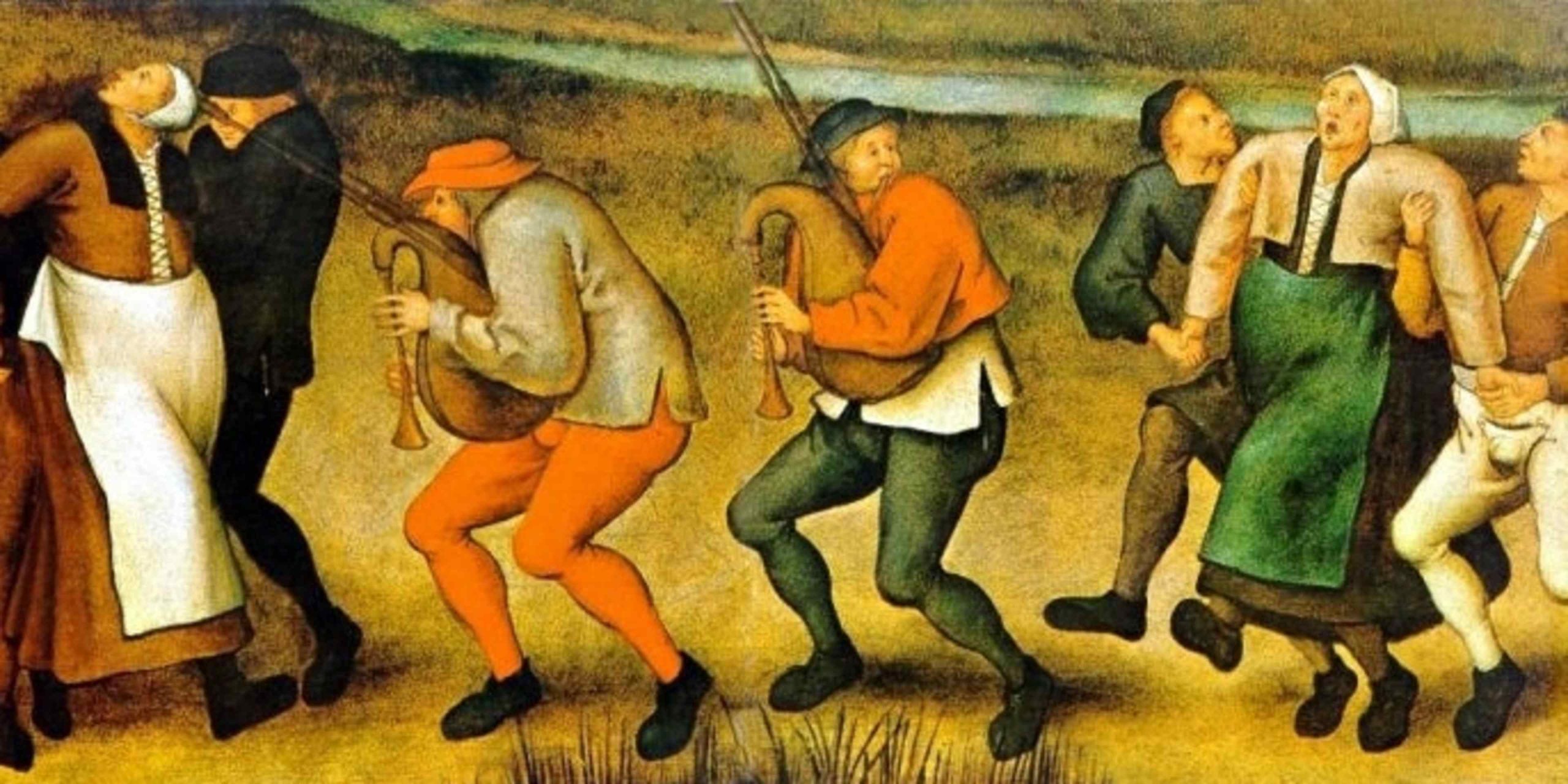In the sweltering summer of 1518, the peaceful streets of Strasbourg erupted into an unprecedented scene of chaos. A lone woman, Frau Troffea, began dancing feverishly in the middle of the street. Within days, dozens joined her in an unstoppable dance that would ultimately claim numerous lives and puzzle historians for centuries to come.

The Dancing Plague of 1518 – Image credit: History.com
The dancing plague spread like wildfire through Strasbourg’s narrow streets. By August, more than 400 people were caught in this bizarre spectacle, dancing day and night until they collapsed from exhaustion. Local authorities, completely baffled by the situation, initially prescribed more dancing as a cure – a decision that would prove devastatingly wrong.

Historical illustration of the dancing mania – Image credit: Wikipedia
Meanwhile, three centuries later, London faced its own peculiar crisis. The summer of 1858 brought what became known as the Great Stink, an overwhelming odor that paralyzed the city. The River Thames, having served as an open sewer for years, had transformed into a toxic soup under the scorching summer heat.
The stench was so unbearable that Parliament members could barely function, despite hanging curtains soaked in chloride of lime over their windows. The crisis reached its peak when government officials could no longer ignore the putrid reality flowing past their doors. This environmental disaster would ultimately force London to confront its inadequate sanitation system.
These two seemingly unrelated events share a fascinating connection in how they sparked massive social reforms. The dancing plague revealed the deep-seated anxieties of medieval society and the limitations of medical knowledge. Modern scientists now understand this as a case of mass hysteria, triggered by extreme stress and social pressure in a time of hardship.
The Great Stink, though less mysterious in nature, proved equally transformative. It led to the construction of London’s revolutionary sewage system, designed by Joseph Bazalgette. This engineering marvel not only solved the immediate crisis but also set new standards for urban sanitation worldwide. The system was so well-designed that it continues to serve London today.
Both events left lasting legacies that stretched far beyond their immediate impact. The dancing plague contributed to our understanding of mass psychological phenomena and the importance of mental health care. Similarly, the Great Stink revolutionized public health policies, establishing principles that would save countless lives through improved sanitation.
These extraordinary incidents remind us how crisis can catalyze positive change. From the inexplicable dancing fever to the all-too-explicable consequences of poor sanitation, these events transformed European society’s approach to public health and social welfare. Their influence continues to shape our modern understanding of urban planning, public health, and mass behavior.
References:
What Was the Dancing Plague of 1518? | HISTORY – link
Dancing plague of 1518 – Wikipedia – link
Categories: Do you know, Historical Mysteries, Public Health, Social Reform, Urban Legends
Tags: Dancing Plague, great stink, Historical Events, Mass Hysteria, medieval europe, public health, social reform, urban planning
Religion: Christianity
Country of Origin: France, United Kingdom
Topic: Historical Mystery
Ethnicity: European


Loved your perspective on this topic. Keep it up!